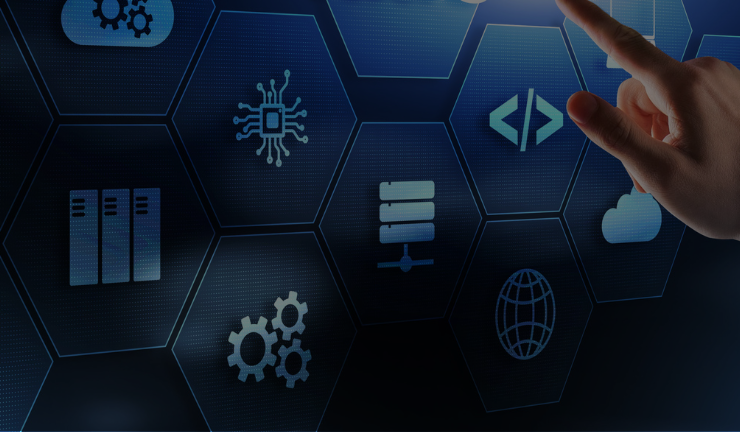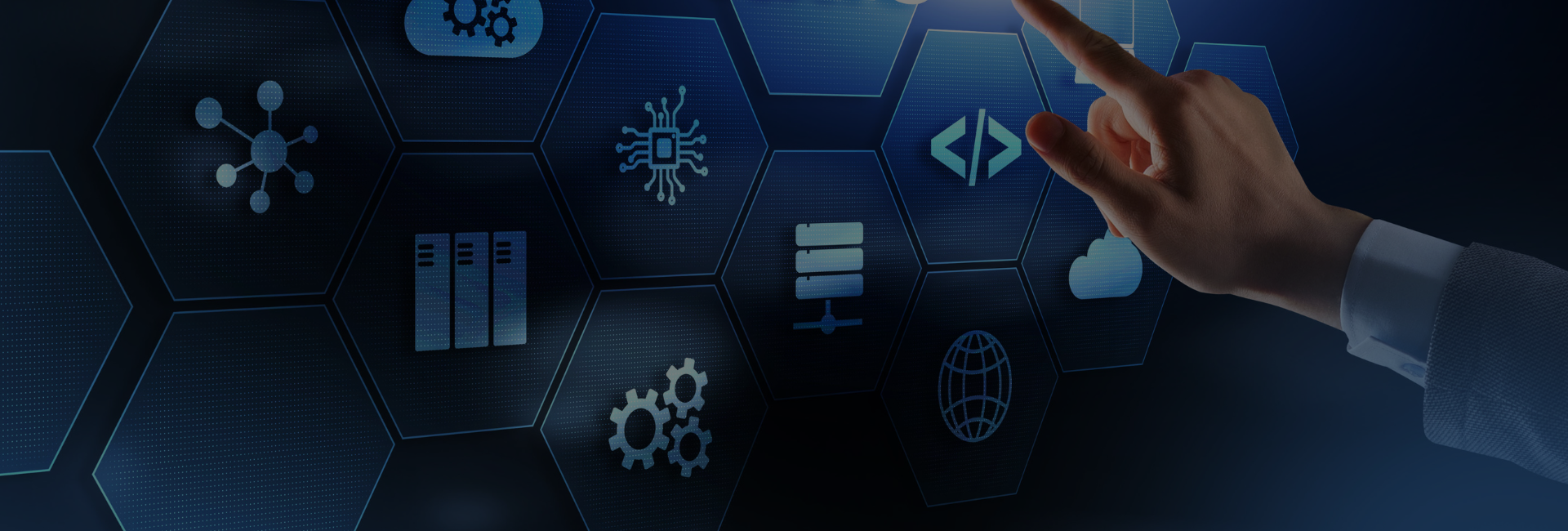In 2025, the pace of technological advancement continues to accelerate, pushing the boundaries of what’s possible and reshaping industries around the globe. From AI-driven automation to quantum computing, the landscape of emerging technologies promises both opportunities and challenges. Consider this: nearly 50% of global organizations are projected to adopt AI-driven decision-making in their operations by 2025, transforming workflows and productivity at unprecedented levels. This isn’t just about innovation acceleration; it’s about survival and staying relevant in a hyper-competitive market.
Imagine the global economy as a fast-moving highway. Software development companies that don’t adopt these emerging technologies are like cars stuck in the slow lane, watching competitors zoom past. But by embracing the latest innovations, companies can tap into new revenue streams, enhance operational efficiency, and deliver better customer experiences. For instance, in the financial sector, over 75% of banks have either implemented or are actively experimenting with blockchain technology for faster and more secure transactions—a trend that’s expected to reshape finance entirely by 2025.
In this blog, we’ll delve into the top trends and technologies expected to make a big impact in 2025, backed by real-world applications, stats, and projections. Whether you’re a tech enthusiast, a business leader, or a professional aiming to stay ahead, understanding these trends is key to navigating and thriving in the digital future.
Top 12 Emerging trends and Technologies 2025
1. Scaled Agile Framework (SAFe) for Large-Scale Agile Transformation
Industries: IT, Software Development, Finance, Manufacturing
Impact: The Scaled Agile Framework (SAFe) helps large organizations implement agile practices across multiple teams and departments. By fostering collaboration, flexibility, and faster product delivery, SAFe enables businesses to respond more quickly to market changes, reduce risks, and improve product quality. It also encourages continuous learning and improvement throughout the organization.
Real Example: Enterprises like Intel and FedEx have adopted SAFe to scale their agile practices across global teams, leading to faster product launches and more efficient collaboration between development, operations, and business units.
2. Tools and Technologies for Defending Against Disinformation
Industries: Media, Government, Social Media
Impact: The rise of disinformation and deep fakes has spurred the development of AI-driven tools to detect and mitigate false content. These tools are essential for protecting democracy, maintaining trust in the media, and safeguarding the integrity of public discourse.
Real Example: Companies like NewsGuard and Jigsaw (a Google subsidiary) are building AI-powered platforms to identify and counter disinformation across social media platforms, ensuring that users are exposed to factual, verified content.
3. Biotechnology and CRISPR for Gene Editing
Industries: Healthcare, Agriculture, Pharmaceuticals
Impact: CRISPR and other gene-editing technologies are transforming healthcare by enabling the correction of genetic disorders and improving agricultural yields.
Real Example: The treatment of sickle cell anemia using CRISPR has shown promising results, and genetically modified crops are being developed to withstand extreme weather conditions.
4. Voice User Interfaces (VUIs) for Seamless Human-Machine Interaction
Industries: Consumer Electronics, Automotive, Healthcare, Smart Homes
Impact: Voice User Interfaces (VUIs) are transforming how people interact with technology, providing a more natural, hands-free way to control devices and access information. VUIs are enhancing convenience, accessibility, and efficiency in daily tasks, from home automation to healthcare management.
Real Example: Smart speakers like Amazon’s Alexa and Google Home have become household staples, allowing users to control smart home devices, play music, and manage schedules through voice commands. In healthcare, voice-controlled virtual assistants are being used to help elderly patients manage medication schedules and access emergency services quickly.
5. Extended Reality (XR) for Immersive Experiences
Industries: Gaming, Education, Healthcare
Impact: XR, encompassing virtual reality (VR), augmented reality (AR), and mixed reality (MR), will create immersive learning, training, and entertainment experiences.
Real Example: AR is used in medical training, allowing doctors to simulate surgeries. Companies like Facebook and Microsoft are investing heavily in creating virtual workspaces for collaboration
6. Cybersecurity Mesh for Enhanced Security
Industries: IT, Finance, Government
Impact: As cyberattacks become more sophisticated, cybersecurity mesh enables security to be more flexible and scalable, protecting digital infrastructure by creating a distributed architecture.
Real Example: Companies are implementing cybersecurity mesh frameworks to ensure that even if one part of the system is compromised, the entire network isn’t vulnerable. J.P. Morgan Chase has invested significantly in cybersecurity to protect its vast network and the sensitive data of its clients.
Ready To Elevate Your Business Using Innovation
Explore The Top Tech Trends Shaping The Future
7. Next-Gen Tools for Software Development
Industries: IT Tech, Finance, Retail
Impact: Next-gen tools for software development, including AI-powered code generators and low-code/no-code platforms, are transforming how applications are built and maintained. These tools significantly reduce development time, enhance productivity, and allow even non-technical users to contribute to the software creation process.
Real Example: GitHub Copilot is an AI-powered tool that helps developers write code faster by auto-completing lines and suggesting entire blocks of code. Another example is OutSystems, a popular low-code platform that enables enterprises to build apps up to 10 times faster than traditional development methods.
8. Blockchain Technology for Decentralized Finance (DeFi)
Industries: Finance, Banking
Impact: DeFi leverages blockchain technology to eliminate intermediaries like banks, offering people direct access to financial services such as lending, borrowing, and trading. It promotes financial inclusion, transparency, and lower costs for users.
Real Example: Platforms like Aave and Uniswap are at the forefront of the DeFi movement, providing decentralized exchanges and lending protocols that empower users to control their assets without needing banks or brokers.
9. Robotics Technologies for Multitasking
Industries: Manufacturing, Healthcare, Hospitality
Impact: The next generation of robots will have the ability to perform multiple tasks, adapting to a variety of environments. These robots will transform industries by taking on complex, manual jobs, improving productivity, and reducing labor costs.
Real Example: Boston Dynamics’ Spot robot is being deployed in multiple sectors, including industrial inspections and healthcare assistance. In hospitality, robots are beginning to manage cleaning, delivering room service, and performing concierge functions simultaneously.
10. Artificial Intelligence and Machine Learning for Personalization
Industries: Retail, Healthcare, Finance
Impact: AI and ML are evolving to provide hyper-personalized experiences. By analyzing large datasets, these technologies will enhance product recommendations, medical treatments, and financial advisory services.
Real Example: Companies like Amazon and Netflix are refining their algorithms to offer a personalized shopping and entertainment experience. In healthcare, AI-driven tools are being developed to customize patient treatment plans based on genetic and lifestyle data.
11. Edge Computing for Real-Time Data Processing
Industries: Manufacturing, Healthcare, Autonomous Vehicles
Impact: Unlike cloud computing, edge computing processes data closer to its source, minimizing latency and enabling real-time analytics. This is crucial for industries like healthcare and autonomous driving where quick decisions are needed.
Real Example: Edge computing is being used in autonomous vehicles by Tesla and Waymo to process data on the vehicle in real time, ensuring safety and operational efficiency.
12. Immersive-Reality Technologies
Industries: Entertainment and Gaming, Education and Training
Impact: Immersive-reality technologies like Virtual Reality (VR), Augmented Reality (AR), and Mixed Reality (MR) are bridging the gap between the digital and physical worlds. These technologies create fully immersive environments or enhance real-world settings, changing how users interact with digital content.
Real Example: Meta’s Horizon Workrooms leverages VR to enable remote teams to collaborate in virtual spaces, simulating real-world office environments. In healthcare, Osso VR provides surgical training using virtual reality, allowing doctors to practice procedures with 95% greater proficiency compared to traditional methods.
Emerging trends and Technologies 2025 FAQs
Q1. How can small businesses leverage these emerging technologies in 2025?
A. Small businesses can benefit from emerging technologies by adopting AI-powered tools for customer insights and personalized marketing, IoT devices for efficient inventory management, and blockchain-based platforms for secure transactions. Additionally, cloud computing and 5G networks are making advanced tech more accessible and affordable for smaller businesses. For example, AI-driven customer service chatbots help streamline support without adding staff, while IoT-enabled devices reduce waste and improve stock tracking. These technologies can empower small businesses to operate more efficiently and compete with larger players.
Q2. How will emerging technologies impact the job market in 2025?
A. Emerging technologies will reshape the job market by automating repetitive tasks and creating demand for new, tech-driven roles. While some jobs may be displaced by automation, others—such as data scientists, AI specialists, cybersecurity experts, and blockchain developers—will be in high demand. According to recent studies, AI and automation could impact up to 30% of tasks in nearly 60% of occupations by 2025. For workers, this means reskilling and adapting to new tech-driven roles will be essential. Many industries are investing heavily in upskilling programs to help employees adapt and thrive in this evolving landscape.
Q3. What is the future of emerging technologies?
A. The future of emerging technologies lies in their ability to seamlessly integrate into daily life and revolutionize industries through automation, connectivity, and data-driven insights. In the next decade, advancements like artificial intelligence (AI), quantum computing, blockchain, and biotechnology are expected to address complex global challenges, from healthcare to climate change. Emerging technologies will likely shift from experimental to essential, becoming embedded in every facet of business, governance, and personal use. As these technologies mature, they will foster smarter, more efficient operations and create new opportunities for innovation, job creation, and global connectivity.
Q4. Which technology will be in demand in the next 5 years?
A. Over the next five years, AI and machine learning, cybersecurity, quantum computing, blockchain, and 5G/6G networks are predicted to be the most in-demand technologies. As more industries rely on AI for decision-making and automation, the demand for AI expertise will grow significantly. Cybersecurity will also remain critical, given the rising threats to digital infrastructure. Additionally, with quantum computing poised to tackle complex problems beyond current capabilities, companies will seek experts in this area. Blockchain technology is expected to advance in sectors like finance and supply chains, while 5G and 6G networks will enable faster and more reliable connectivity across devices.


